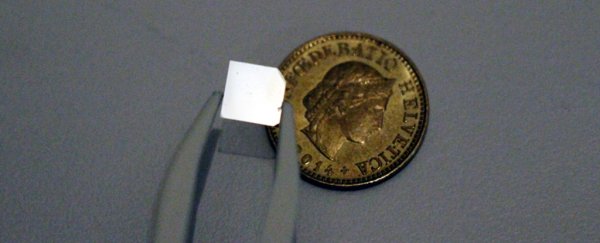Scientists have observed a quantum vibration at normal room temperature for the first time, a phenomenon that usually requires ultra-cold, carefully calibrated conditions – bringing us another step closer to understanding the behaviour of quantum mechanics in common materials.
The team was able to spot a phonon, a quantum particle of vibration generated from high-frequency laser pulses, in a piece of diamond. These phonons are notoriously hard to detect, partly because of their sensitivity to heat.
What makes observing a phonon so important is that it shows a vibration acting as a single unit of energy (as described by quantum mechanics), as well as a wave (as described by classical physics). At room temperature in open air conditions, it brings quantum behaviour "closer to our daily life" in the words of the researchers.
"There is a dichotomy between our daily experience of what a vibration is – a wave – and what quantum mechanics tells us it must be – a particle," says physicist Vivishek Sudhir, from the Massachusetts Institute of Technology (MIT).
"Our experiment, because it is conducted at very tangible conditions, breaks this tension between our daily experience and what physics tells us must be the case."
The experiment put together by Sudhir and his colleagues involved shooting a laser at 80 million pulses a second to try to excite the phonons resting in the diamond.
Phonons operate at high frequencies in diamond, which means they're operating at a higher energy than the surrounding air – that avoids interference from higher thermal energy, which means an ultra-cold, ultra-specific lab setup is no longer required.
The researchers hoped these bursts of photons (single units of light) carried by the laser pulses would be enough to cause an interaction with just one phonon, creating a wave shift that decays over time – a process known as Raman scattering.
A second laser pulse was used to verify that this is indeed what happened: this pulse acted to de-excite the initial burst of energy, leaving researchers with a new, high-frequency photon – a tell-tale sign that it had excited a single phonon along the way, and thus generated a quantum vibration.
"What we've done here is to ask the question, how do you get rid of this complicated environment you've created around this object, and bring this quantum effect to our setting, to see it in more common materials," says Sudhir.
"It's like democratising quantum mechanics in some sense."
This same technique could be used to examine other "common materials" and find quantum vibrations in them, the researchers hope. It could also feed into research into the superconducting properties found in certain materials.
Further down the line, this research could also point us towards materials that are going to be suitable for connecting together the quantum computers of the future – materials that will need to carry phonons.
"What our work means is that we now have access to a much wider palette of systems to choose from," says Sudhir.
The research has been published in Physical Review X.
